Curious about running a sustainable small business?
Once a fringe business strategy, sustainability has become a prerequisite for any new business hoping to succeed in the long-term.
Whether you own a pizza shop, landscaping company, real-estate firm or just starting out, prioritizing sustainability is an easy and effective way to distinguish your small business and ensure long-term stability.
This guide will help you adapt, react and plan for the wave of industry trends that prioritize social impact in a post-pandemic world.
Table of Contents
Running a Sustainable Small Business
Running a sustainable small business requires careful intent behind each aspect of your operation.
An inside-out operations approach will certainly maximize social impact. But it can also improve your bottom line.
What to do for your “eco-audit”? Identifying and minimizing micro-waste in your everyday business operations is a great place to start.
If you haven’t already, stop creating paper catalogs and other paper-based sales materials. Instead, create an online catalog with full details of all of your products, and update it frequently.
Drive traffic to your site with engaging content through multiple channels spanning email, social media and market niche sites.
Mix in targeted ads in search engines, local media outlets, niche-related/industry-related blogs, social networks and magazines.
Make the most of your email marketing lists to remind people to come to the site and see what’s new. Have regular product launches and promote them on social media and online press release distribution services.
That way, you can spread the word about your new green product and service while going paper-less.
Something as basic as minimizing paper waste may seem petty. Still, everyday choices almost always end up making or breaking profit margins.
Daily Decisions Add Up
As you run your sustainable small business, day-to-day office decisions can impact your sustainability credibility too. It’s a stressful but necessary process that can be updated and revisited as your business scales.
Do your colleagues hit the print button all the time without thinking? Do you aim for a paperless office with good back-up on both hard drives and cloud storage?
Employee perception is just as important as your customers’. If you ‘go green’, yet dump excess ink in the back parking lot every Friday, employees will take notice.
Without a strong company culture, worker performance and productivity suffers.
If you have been in business for some time, one of the easiest ways to go green is to revamp your product line.
Look at two or three of your best-selling products, and see if you can come up with greener versions.
Ask your customers what they think of the idea. Survey your email marketing lists to see if they would also be interested in greener versions of your products.
Once you have done your market research, analyze your product to feasibly make it greener.
For example, you might want to switch up the packaging. Opting for recycled cardboard and soy-based inks will make a big difference on sustainability metrics.
Also pay attention to the plastic you use. Opting for ones that are easily recyclable will also ensure that less trash ends up in landfills.
Some Basic Tips For Your Home or Office
Do you use paper cups and disposable plastic coffee pods? Or mugs and a standard coffee machine with a reusable stainless steel filter?
If the latter, do you use the coffee grounds for mulch in your office plants or your own garden?
Which cleaning products do you buy for the office? Bottle after bottle? Or the small containers you use to refill the bottle and just add water?
Are they green cleaners without harsh chemicals? Or heavy-duty ones that pollute the environment and even cause allergic reactions?
Use recycled paper in your printer, along with plant-based inks. Use recycled toilet paper, tissues, and paper towels as needed.
Brand Image Matters
In client-facing areas, there are likely many things you can do to make it leaner and greener.
Show target customers you are not just cashing in on the green trend; you are genuinely concerned about the environment.
Consider buying cotton hand towels in place of paper towels and washing them regularly. As mentioned, use mugs instead of disposable cups.
If you are in the food space, encourage customers to do the same in a clever, approachable way.
For example, “bring a coffee cup, save the trees!”. Use a regular coffee machine instead of a Keurig so all those little plastic pods don’t litter the planet.
Use a stainless steel reusable filter in your coffee machine basket so you don’t even have to waste paper on coffee filters.
Buy water filters and filtered water jugs to cut back on bottled water use.
Use BPA-free plastic (or stainless steel) water bottles and travel mugs to cut down on trash and plastic in the environment.
When your done, boast your eco-friendly operations at the cash register or email signature line. More on marketing later.
There are many ways to educate your customers about green issues. But first you have to learn yourself.
Once you do, take a 360-degree look at your products, services, office (if you still have one), and vendors. Clean and green your company with the goal of impressing customers.
As it turns out, there are a lot of consumers interested in this sort of stuff.
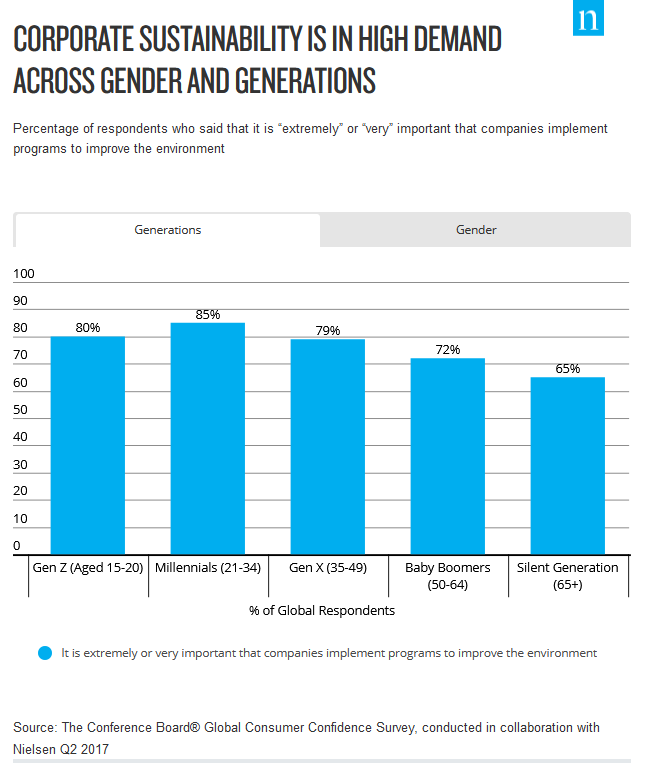
This Nielsen study reveals that well over half of consumers are curious about sustainability. Similar graphics show America’s unprecedented concern for climate issues during the 2020 election.
So what other procedures or policies can we implement to ensure integrity behind our green initiative?
Knowing the Green Niche
About 20% of the US consumer base is “very green” – that is, takes green issues extremely seriously.
Another 40% can be considered “medium green”; green issues are considered when making a purchase, but it is not the most important factor.
If you want to establish yourself as a sustainable small business, you have to be the real deal.
This requires “selling yourself” to the 20% who are truly green. This is no easy feat. Researchers observe the ‘elusive green consumer’ paradox, where customers say they want to purchase green products, but don’t buy them.
Brand trust is one of the most important factors.
Finding Your Online Community
Fortunately, on social media, people tend to cluster in groups and share their interests. By focusing on these micro-clusters, you can somewhat control how your brand is perceived.
Just make sure to stay consistent, or those Yelp and Google reviews will come back to haunt you.
The green internet niche is a busy one. And it’s expanding. In consumer packaged goods, sustainability-marketed products grew faster than their conventional counterparts in 90% of categories.
The sustainability community also overlaps with other niches that have an ethical or even spiritual dimension. So you have to stay focused.
For example, people who are interested in climate issues are often also interested in LOHAS – Lifestyles of Health and Sustainability.
This is a holistic way of looking at your target customer’s lifestyle. What foods do they eat? What hobbies do they engage in? Learn the other products they buy, the clothes they wear, the housewares they purchase for their homes.
These are important factors to consider when drafting your messaging.
To highlight another example, most vegans identify with the sustainability community.
People interested in sustainability are often interested in holistic health, and are therefore more willing to try herbal supplements, organic foods, and healthy activities such as yoga, tai chi, walking programs, outdoor adventures and so on.
Consider all aspects of your target customer.
Tips for Creating Green Products and Services
There are a number of ways to start creating green products and services for your business. Your approach depends on whether or not you are just starting a sustainable mall business.
Have you been in business for a while and just wish to make your business greener?

Doing Your Research
Your first step is to do your research. If you are starting your own sustainable small business, you need to do engage in specific research.
Determine whether the target market into will be profitable based on customer size and existing products.
Within that market, then find out if green issues drive purchasing decisions.
For example, we know that dog training is a profitable niche. Are dog owners green, or interested in holistic living?
The answer is somewhat yes. Especially given how large that market is.
Eco-conscious dog owners buy healthy toys free from plastic. They steer clear from rawhide, since it is full of chemicals.
These customers may avoid products made in China after a food poisoning scandal killed pets.
Think about your target customer profile and what drives their purchasing decisions, then cater to it.
Understanding Sustainability Issues
Keep in mind that it is not enough to simply have products that you call “sustainable”.
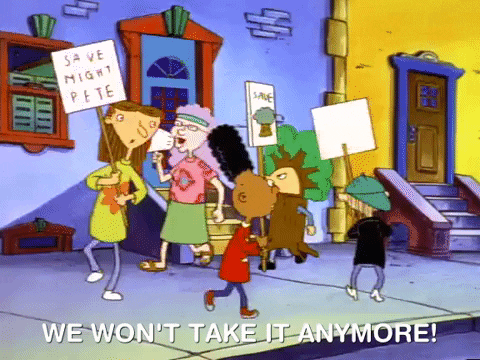
Sustainability is also a mindset and group of values. A sustainable lifestyle spans climate, food, fair trade.
Fair trade ensures suppliers from developing nations are fairly compensated for their produce and work. The fair-trade certification began when too many suppliers were fobbed off by corporations with rock-bottom prices.
Sustainability can also be tied to justice, inequality and other hot-button issues.
Before engaging with any supplier or marketing campaign, understand what it means to be sustainable to a wide audience. Otherwise, you may be next on the Twitter cancel culture hit list.
When you do decide on a supply chain, know your process from the point of manufacturing to customer arrival.
Check your product, people and process from top to bottom when evaluating its sustainability.
While launching a marketing campaign, get feedback from a diverse audience before hitting send. Consider the potential backlash or unintended harm that your campaign may have on marginalized groups.
A well-intended marketing approach can quickly turn your brand reputation on its head.
Utilizing Existing Vendors
If you are thinking of making your products greener, check with your suppliers.
Chances are they have greener versions of many of the products or raw materials that you use.
Maintaining existing business relationships with reliable vendors is always a less-risky option. Plus, they get to keep you as a happy customer.
Most importantly, if you are thinking of running a sustainable small business, there’s no need to do it alone.
There are many free resources available that can set you up for success when choosing a sustainable process.
II. Marketing, marketing marketing.
What Is Green Marketing?
Green marketing is a marketing strategy that highlights a company’s environmental footprint as part of its branding.
The key to this strategy is to market products and services as greener than what is already available on the market.
Let’s say you wanted to open a dry cleaner as your sustainable small business. Your shop uses less harsh chemicals, recyclable plastic, reusable hangers and shirt boxes than x% of the competition.
You also need to educate consumers on why green dry cleaning is as good as, if not better than, existing dry cleaning. By explaining what the difference is, you can justify any price difference related to your new green product line.
Studies show customers are willing to spend 10 to 20% more on a green product versus a traditional product if it gives the same level of performance, if not better, than what they usually use.
About us Page, Mission Statement
Your sustainability initiative must be part of your About us Page and Mission Statement.
These “housekeeping” pages on your website are more important than you think. Google’s search engine spiders scan them more than any other pages at your site apart from your homepage.
Here at Sustainable Review, it is our two most visited pages.
New site visitors want to know who you are, what your values are, and why they should do business.
Don’t make them guess or hunt all over the site to find out this information. Put it where they can find it and be proud of your green offerings.
When telling the story behind your sustainable small business, be concise and direct.
Your website should be a hive of activity, so that visitors can see all you have to offer. First impressions matter.
Once you travel down the sustainability path, be sure your website and all your marketing reflects your mission. Quantify what difference it makes for your profits.
Green Products and Services
Green marketing has two main aspects.
First, it prioritizes environmental considerations when creating and selling a products and/or service. Going back to the dry cleaning example, a lot of people use laundry services and dry cleaners.
A greener laundromat would use cold water washing, water-efficient machines, gentle detergents, and energy-efficient washer and dryers. Some might even be solar powered.
When running a sustainable small business, a dry cleaner would use fewer harsh chemicals while still getting the job done. It would use less plastic and paper to wrap up clothes.
It would give customers incentives to bring back wire hangers so they don’t end up in the garbage. This is also a way to encourage brand loyalty.
Customer Research
Greener customers tend to make purchasing decisions based on research.
They understand what impact each product has on the environment based on ingredients, materials, public information.
Consider how many people have purchased a Tesla in the last year, for example. Many of those customers made the switch from gas vehicles, and had to research electric cars before buying.
Many eco-conscious customers go on social media to find out other people’s experiences before making a final purchasing decision. I know I do.
This phenomenon, referred to as social search, can greatly influence your target market before they pull out their wallet.
When researching, a green shopper will ask friends and family, and treat social media signals as word-of-mouth advertising.
In fact, studies show that feedback on social media is more trusted than information given by the manufacturer. Green (and young) consumers listen to what peers tell them, rather than what manufacturers or labels say.
Be Authentic, Know Your Audience
With an educated consumer base, it is important for your sustainable small business to emphasize reputation management and good customer service.
Social media can be a double-edged sword. It is a great opportunity for people to share experiences.
On the other hand, social media can be a hot spring for anonymous haters or rival companies that want to undermine your business.
If you are sincere and honest about your products, this shouldn’t be a major problem.
Ethical issues are hard to overcome in this space. Focus on integrity; customers notice when companies want to cash in on a trend.
Your website is the hub of all marketing activity.
Be sure to have social share buttons on your site or blog so visitors can share posts on their social media accounts with just a click.
You want happy customers to spread the word and create the impression of a clean, green company that’s well-worth doing business with.
Do your Customers Care?
If you’re already running a somewhat successful sustainable small business, you might be wondering about ways to increase sales or develop new products your target market might be interested in.
The first step before taking any action is to determine whether or not your customers care about being green.
In case you aren’t sure whether your customers are interested in green issues, here’s the good news. Most US consumers take sustainability into consideration when making a purchase.
Regardless of sustainability, consumers look for products and services that function as good or better than existing traditional products. If you can do this at a reasonable price, you will find committed consumers.
Survey your Customers
If you are still not sure if your target market is interested in green products, try a survey.
Use your email marketing list to send out a simple survey with a free service like Google Forms or SurveyMonkey.
Ask your customers if they would be interested in greener versions of your top products. Get them to rank their preferences so you know what to work on first in your small green business.
Be a “Green” Role Model for New Customers
If you want to attract a wide audience with your sustainable small business, be a role model.
Lead the charge and set a good example of how to become more eco-friendly.
That way, customers who may not be as informed about sustainability will be more willing to learn.
Convert customers by making a rational case for sustainability.
For example, Allbirds aren’t only more sustainable than let’s say a casual pair of Adidas, they are more comfortable too!
Greening Your Existing Products
As mentioned, it is important to survey your customer base to determine whether or not they would be interested in greener alternatives to your top-selling products.
Below are a few ideas for creating greener products and services that your customers should love. If you already run a sustainable small business, you can skip this part.
Organic Food Service
Ordering food online is booming. As part of your food business, you could stand out if you were to offer organic whole food for delivery. Emphasize freshness, locality, and taste in your chemical-free organic foods.
Organic Fashion
These days, people are interested in sustainable natural fabrics, not synthetics. You can source fabrics from all over the world that are 100% organic, such as linen, bamboo and cotton.
There is also a great interest in recycled or upcycled items.
Some people love to shop in vintage stores, while others love repurposing pre-existing garments.
For example, you can make great cushion covers with old sweaters, and even a wedding gown out of old umbrella fabric.
Eco-Friendly Gardening
If you run a lawn maintenance and garden service, consider offering an organic one that promises no harmful pesticides and harsh chemicals will be used.
When making choices about what products to use, also take into consideration any family pets and children.
Cocoa mulch is all natural and very effective, but dogs have died from eating it because they should not consume chocolate.
Green Wedding Planning and Live Event/Party Planning
Weddings are a prominent example of conspicuous consumption. Many modern brides, however, are concerned with the impact of their wedding on the environment.
They also hesitate about spending a lot of money on cut fresh flowers when there are many green alternatives, such as silk.
If you are already a wedding planner, or live event or party planner, you will know all about the amount of waste such events can generate.
If this is the case, analyze ways you can make event planning more sustainable. Locate products and vendors and become an affiliate and earn a commission, or earn commission on referrals.
These are just a few simple ways to create green products and services you know there will be a market for, for greater profits. Apply these same strategies to your specific industry.
How to Promote Your Green Marketing Strategy on Social Media
Green Affiliate Marketing
If you are thinking of expanding and “greening” your business, one of the easiest ways is to become an affiliate marketer.
Test the market and your customers’ interest in green products without spending a lot of time, money and energy creating them from scratch.
There are many companies which offer affiliate programs so that you can sell their products in exchange for a commission.
You could also sign up for Amazon Associates (not the best company for environmental standards) and create an entire store of green products with just a few clicks.
In addition, there is direct selling – that is, face-to-face selling of brand-name products and services in exchange for a commission.
Good examples of top direct sales companies would be Tupperware and Pampered Chef.
Avon and Mary Kay are also hugely popular; however, since they now test their products on animals, they are no longer SR-approved.
However, you are sure to find a large number of green companies if you search for green affiliate programs and green direct sales companies.
Sign up for the programs, start selling, and track your results.
How to Find Green Affiliates
Smart business owners are always looking for easy ways to expand their customer base. One of the ways to do this is through affiliate marketing.
Green affiliate marketing is a little bit more specialized, but it is possible to find green affiliate programs that you can join, and in turn find affiliates who are willing to market sustainable products.
Getting Green Affiliates and Joint Venture Partners
If you are already selling sustainable products, it is important to look for affiliates to help you broaden your customer base.
Your best affiliates might also be willing to form joint venture partnerships with you, in which you work on mutually profitable deals together in order to make more sales.
In terms of green affiliate marketing, the process is similar to becoming a green affiliate yourself.
Online affiliate marketplaces are a hive of activity with many opportunities that should be right for your business.
Some of the top ones like CJ.com and Rakuten are easy to use as an affiliate, but too expensive for small businesses to use if they wish to look for affiliates.
Fortunately, there are a couple of marketplaces which are affordable.
ClickBank is the best affiliate marketplace for selling digital products – a perfect green product.
For example, an eBook conserves trees, water, chemicals, ink and so forth.
ClickBank also allows people to start selling tangible products at their site, such as herbal supplements, customized clothing and mugs, and so forth.
Another good site for picking up green affiliates is PayDotCom.
It allows you to sell both the digital and tangible goods and has a very easy-to-use interface.
You can create a shopping cart, and also offer valuable resources for your affiliates in order to help them sell your products like pros.
How to Promote Your Green Marketing Strategy on Your Website
Your website should be the hub of all of your marketing activity.
If you decide to offer a new line of sustainable products and services, your website should be the first place to start.
Promote new changes
If you update the sustainability of a product with new packaging, write about them at your site.
You might even write a press release about your changes if you are using any new, cutting-edge technology.
For example, there is an inventor from New Zealand who created a portable machine that can create standard-sized building bricks out of sea plastic shoveled up from beaches in the Hawaiian Islands.
They use the bricks to make houses for the poor. That kind of innovation is headline-worthy and certainly should be reported on your website.
The digital face of your company
Your website should be the hub of all of your company activity.
A truly sustainable small business will try to be as clean as possible. This includes discontinuing paper catalogs or direct mail to market your products.
Do most of your marketing online, or person-to-person.
Buy recycled photocopy paper and paper goods for the office. You might even consider documenting all you do and the savings they involve.
Then you can share your experiences and become a poster child for a leaner, greener company in your niche or industry.
You could even create eBooks, or become a coach or consultant, about greening one’s business, spinning new profitable products out of everything you learn.
Naturally, you would launch these new products at your website.
Joint Venture Partnerships
Once you are working as an affiliate, or have affiliates, you will get to know both you competitors and those who sell similar but not identical products to your own.
You might decide to approach them with a deal, or vice versa.
The deals usually involve mailing to each other’s email lists and splitting the sales 50/50. Other deals can be more complicated if you work well together.
Becoming a green affiliate, and collecting an army of green affiliates, are two of the easiest ways to grow your business by leaps and bounds and tap into this multi billion-dollar market.
Once you decide to make your business more sustainable, it will be important to market this fact to your target audience.
One of the best ways to market any new initiative is on social media.
Having said that, announcing that your small business is now sustainable can be a tricky proposition.
On the one hand, regular customers don’t really like change.
On the other hand, up to 90% of US consumers are interested in climate and sustainability issues.
Getting Support from Third Parties
Once you’ve starting thinking about green marketing, it might be a good idea to get support as you set up your products and services and start creating your marketing material along the correct green guidelines.
The Small Business Administration
The Small Business Administration (SBA) in the US has a range of free resources to help business owners start up and run their own sustainable business.
Topics include creating sustainable products and services, advertising, green marketing, Federal Trade Commission (FTC) compliance for green marketing materials, and market research.
It also lists green marketing case studies, energy efficiency guidelines, green commuting ideas, and green contracting opportunities to sell goods and services to the government.
The Environmental Protection Agency
The Environmental Protection Agency (EPA) offers small businesses information on compliance with all key regulations, including energy efficiency ratings.
It also offers training, grant opportunities and guidelines on how to get certified as a small business with the EPA.
They also offer the Safer Choice resource for consumers and manufacturers so they can make smart decisions about what raw materials to use and what products are best to buy.
As part of this program, they also offer guidelines for a safe environment in the workplace in terms of chemicals, and a similar program in reference to the use of pesticides.
The Sustainable Marketplace Program
The Sustainable Marketplace is run by the EPA and offers guidelines on choosing and sourcing greener products if you are a business or institution.
It also offers consumers advice about how to make more sustainable choices in relation to the many items they buy, which can give valuable insight into exactly what eco-consumers are looking for and why.
The Global Ecolabelling Network
The Global Ecolabelling Network (GEN) oversees various types of green certification.
Depending on the kind of product, a company can write their own declaration of their product or service being green, or get certification or a license.
If the certification is mandatory, the GEN can help ensure that any hazard warning and essential information about the product is correct.
The manufacturer can also get seals of approval, report cards and single certification, such as Energy Star compliance and ratings.
The Federal Trade Commission
The Federal Trade Commission (FTC) offers detailed guidance about acceptable marketing practices in relation to green marketing, which they refer to as environmental marketing.
It gives clear definitions of various key terms, such as organic and “clean diesel”, and specific labeling guidelines. It offers definitions on a number of topics commonly found on labels, such as “free of”, non-toxic, and more.
Don’t Make These Mistakes with Your Green Marketing
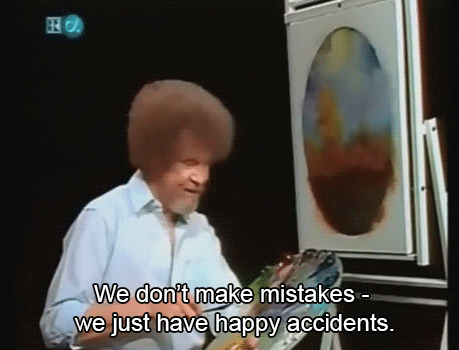
There are a number of common mistakes new green marketers make that can cost you big time if you aren’t careful. Some are totally inadvertent.
Others are deliberate, and can ruin your brand’s reputation if you get caught.
-
Not knowing your niche
The green marketing niche is booming, so it is easy to get carried away with the idea of jumping on the bandwagon and riding along the trail to profits.
However, it is important to know your market, and make sure that your messaging is on point.
About 20% of US consumers are considered to be “true green” – that is, very keen and knowledgeable about the issue.
You need to win them over if you are going to succeed in tapping into the entire 90% of the population who has expressed some interest in buying sustainable products.
-
Missing the mark on your campaign
Your product needs to ‘pass the test’ if you wish to establish a good reputation as a green marketer offering eco-friendly products and services.
You also need to demonstrate a green ethos in your company to prove that you are not just paying lip service to sustainability values.
Some companies have been caught lying about sustainability development goals when activists investigate the true origins of raw materials.
They may expose unsustainable trade practices, or poor workers’ rights that indirectly impact your business.
If you miss the mark, you could alienate yourself from a core customer base, perhaps without even realizing it.
-
Underestimating the community
Climate-concerned customers do a lot of research. Or at least more than the average customer. They want to understand a product well enough to make an informed purchase.
For many sustainable-shoppers, it is not just a case of buying a tube of toothpaste and moving on. Every purchase is part of a holistic lifestyle.
They consider price and quality, but also raw materials, where they come from, if products are tested on animals, and so on.
They read labels and do background research, so your product needs to be able to stand up to this kind of intense and intelligent scrutiny if you are to succeed.
-
Mislabeling
Marketers can get carried away with cool slogans and rhetoric.
They may not consider if a label is misleading if they don’t know their market well enough – or, in a worst-case scenario, try to trick consumers by presenting themselves as sustainable when they really aren’t.
For example, Clorox boasts about greener cleaners, but they still churn out caustic ones by the gallon.
A car company might boast about their hybrid vehicles, but a quick internet search reveals that they are manufacturing ten times more gas-guzzling autos each year.
-
Greenwashing
Misleading consumers about the extent to which your company is green is termed “greenwashing”.
It comes from the term whitewashing, making something appear cleaner than it really is. In this case, companies who greenwash are trying to make their products seem more eco-friendly than they really are.
But since the sustainability community is considered to be a more intelligent consumer, greenwashing is a bad idea… if you value your reputation and profits long term.
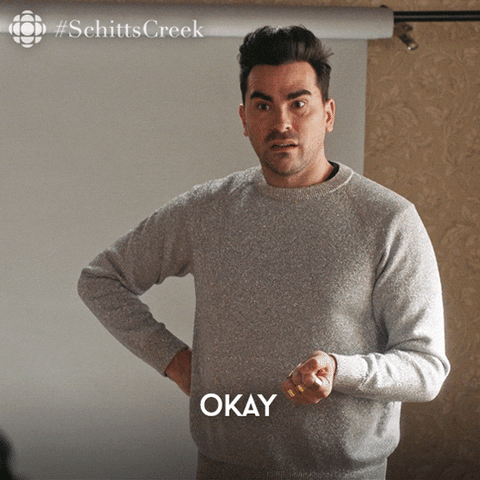
These common errors in green marketing can cost you if you make them, or if you simply try to trick your target market.
It may work for a month, or even a year, but eventually someone will catch on and notify what will feel like the entire Internet.
Put green ethics above profits within reason and you should soon have a successful, sustainable company with happy customers and a good reputation.
Environmental Health Perspectives
This journal published by the National Institute of Health (NIH) offers a wide range of articles regarding the impact of various manufacturing practices on the environment and how to produce cleaner, greener products.
Even though its ten years old, the information remains relevant.
Their article on greenwashing is a must-read for anyone wishing to produce honest and accurate green marketing materials and ads.
Green Ethics
Once you enter the realm of green marketing, you will find that it connects with other ethical considerations and personal values.
For example, green marketers will often source raw materials or buy wholesale from “fair trade” co-operatives and small businesses.
As the name suggests, fair trade means that the suppliers, such as coffee farmers, are paid a fair wage for their produce. That they are not forced to live on a poverty-level wage.
Coffee, tea, and cocoa are just a few of the items you might have in your office kitchen. Fair trade clothing, jewelry and furniture might all be part of your small green business.
Sustainability is a mindset and certain values you can share with your customers. Green marketing is therefore not just about selling, but is a way of life.
Becoming more aware of sustainability issues can be a path to greater profits only if you are willing to put values and ethics first.
Other Ethical Considerations
Another set of ethical considerations? Political orientation.
For example, some sustainable shoppers refuse to buy products from certain countries. It could be a history of poor human rights records, or concerns about safety and business ethics.
Just be aware of what you’re putting out on the market, and view it from every possible political angle.
For example, many people in the US avoid anything made in China, both for political reasons and also for concerns over quality control.
The dog food, baby formula, and Chinese steel industry scandals have made the American public very skittish about purchasing Chinese goods.
Due to concerns over the balance of trade and preserving jobs in the US, many consumers are also now looking for “made in the USA” on the labels instead.
Locally sourced products also tend to have a smaller carbon footprint.
When labeling your products, be sure to be honest. The item might be made in the US but the raw materials might be sourced from one or more countries abroad.
Consumers are voting with their dollars more than ever now, so if you are interested in launching a sustainable product line, be sure to check with your customers first to determine if they are interested in eco-friendly products, and what is motivating that interest.
Cater to them with just the right amount of new products and services based on your market to boost profits. If you aren’t historically known as ‘sustainable’, don’t overwhelm them with a 180 shift. It could come off as inauthentic.
III. Sustainable Finances
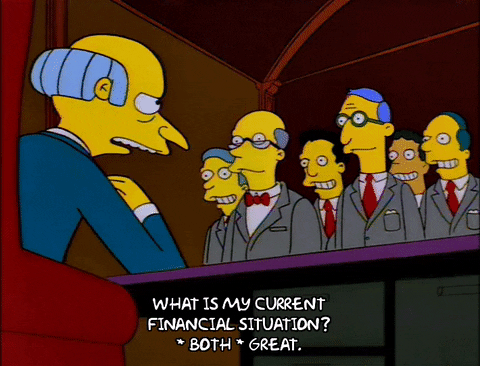
Tips for Pricing Your Green Products and Services
One of the most common questions about running a sustainable small business is “how much should I charge”?. This can be tricky.
Both business owners and loyal customers can be hesitant to price changes.
And entrepreneurs just starting out need need a pricing benchmark.
Their products and services need to be comparable to those already on the market.
Going Higher
Business owners might be concerned about a decrease in sales if they increase prices. Perhaps existing customers will scoff at a bad deal if a business owner raises prices.
Consumers are always concerned with getting good value for money.
A price change might turn off a customer or two. Still, as with most effective marketing, the important thing to do is to understand the needs of your customers and what drives them to make purchasing decisions.
It is also important to understand your unique selling point. Why should they do business with you?
Consider the quality of your product. It should be just as good, if not better, than the existing product – only greener.
If this is the case, most customers will not mind a price increase. Price and value are two different things.
Price versus Value
Not everyone looks for bargain-basement prices and shops at Walmart. Many do.
Our customer base, however, tends to have ethical concerns about whether workers are treated well, where raw materials are sourced from, and whether or not vendors that supply their products are fairly compensated.
Since Walmart fails on all three counts, ethical shoppers will choose to spend their dollars on more ethical companies.
Value-Driven Pricing
Studies show that customers interested in sustainability issues are willing to pay 10% to 20% more for a product if it is sustainable.
This only holds true if the product matches the quality of the less sustainable alternative.
This being the case, you can use your current pricing as a guideline and add 10%.
The Cost of More Sustainable Products
Consider the cost of raw materials, especially if you are improving an existing product.
Switching to post-consumer waste paper for your packaging instead of your present packaging might actually work out cheaper, so you could keep your price the same.
You might also decide to source your raw materials from let’s say a fair-trade co-operative in Africa.
In this case, you might pay a little bit more for your raw materials, but you would also be creating a social impact that extends beyond borders.
If this ties well with your mission, it may be worth the extra cost of goods.
Announce price changes on your website. If you explain it well, most customers will be more than happy to pay a little bit more.
No matter what decision you make regarding pricing, make sure that your customers understand the value proposition.
Customers will actually feel good about the price increase if they know they are doing something worthwhile with their money. Messaging and timing is key.
Conclusion
Sustainability in business requires more than just tangible changes. It requires a holistic way of thinking that incorporates people, planet and profit into every decision.
If you are feeling stuck or not sure where to start, Sustainable Review offers consulting services in email marketing and sustainability initiatives. Contact us here to schedule a call!
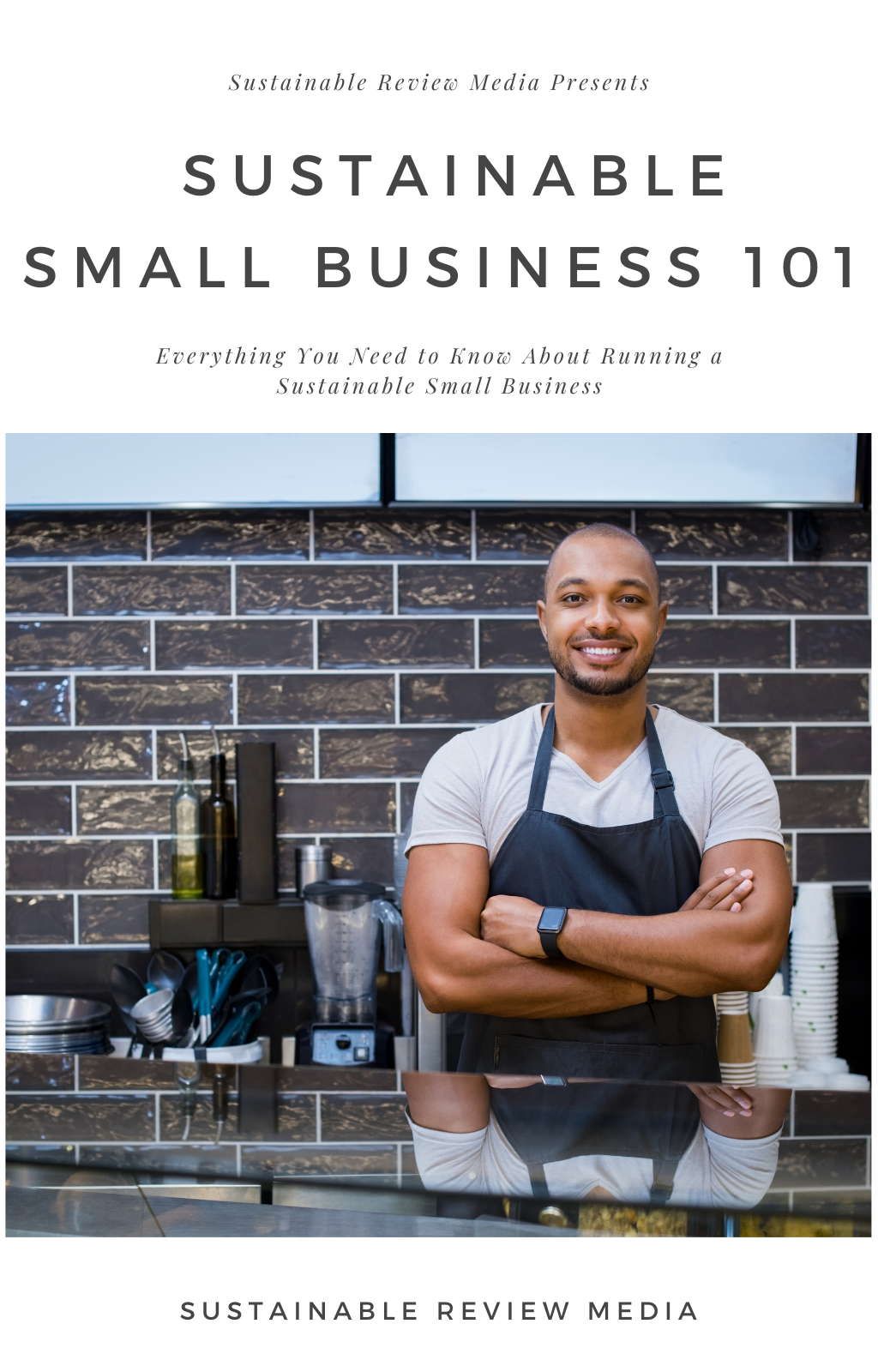






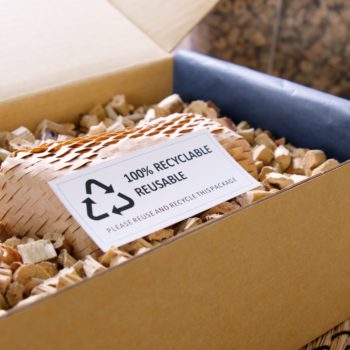


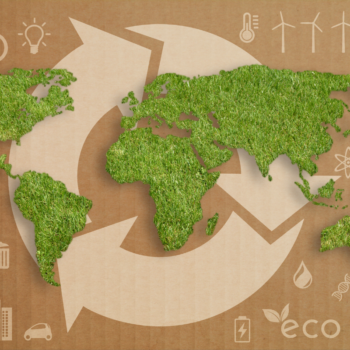


No Comments